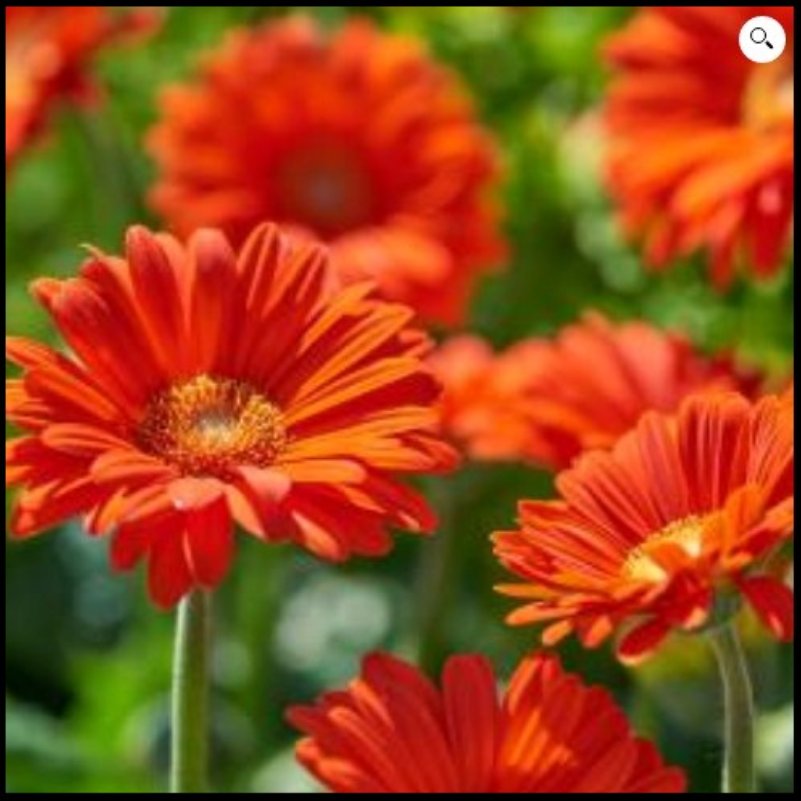Succulents and Cacti: Do not re-water them until the soil in the pot becomes completely dry to the touch. In the winter season, the watering schedule must be even less frequent.
Tropical Plants: These plants often need more regular watering, but make sure that they’re not sitting in water. As a tropical plant, they’re still susceptible to root rot. You’ll know it’s time to water your plant when the top inch of soil feels dry to the touch.
Plants with High Humidity Needs: Some plants, like ferns and calatheas, need a high level of humidity to thrive. Along with watering, you can also mist or buy gerbera plants online by a humidifier.
Signs you might be overwatering your plants:
- Yellowing leaves
- Musty smell
- Soggy Soil
Very similar to watering, there’s a trick to potting and repotting your plant: you need to pick the right size every time.
When to Repot:
- Not enough room for the roots to grow in the pot
- Soil is drying out way quicker than usual
- Little to no growth, even in the growing season
- I use about 1-2 inches in diameter larger than the last one, as the general rule of thumb always applies. Since its fresh potting soil, your plant will thrive.
There are two main types of fertilizers: organic and synthetic. Organic fertilizers, like compost or fish emulsion, release nutrients slowly and improve the soil over time. Synthetic fertilizers, on the other hand, provide a quick nutrient boost but don’t enrich the soil.
The choice of fertilizer depends on your plant’s needs. Some plants, such as flowering or fruit-bearing varieties, require more frequent feeding, while others can go months without fertilizer.
When to Fertilize
Most plants go dormant during the winter months, so it’s best to reduce or stop fertilizing during this time. However, during the growing season, regular feeding every 4-6 weeks can help your plant grow to its fullest potential.
Keeping Pests at Bay
Indoor plants are not immune to pests. The most common bugs that infect indoor plants are spider mites, aphids, and mealybugs. Regularly monitor the health of your plants by inspecting the leaves and stems. It is very important to catch infestations early as long-term infections are difficult to treat.
Natural Pest Control
Here are a few natural ways to control pests without harmful chemicals:
- Neem oil: acts as a natural pesticide that can be sprayed on leaves to ward off pests.
- Soapy water: a few drops of dish soap and water and you’ve got some mild but effective pest remover for aphids and spider mites.
- Wiping leaves: take a damp cloth to the leaves of your plants to keep them free of dust and remove pests before they become a problem.
It’s calming to tend to your own little corner of green. You’ll watch your plants grow and thrive, and it will give you peace and accomplishment. In fact, numerous studies have shown that being near plants decreases stress, improves focus, and even boosts your mood. Even if you’re not one for yoga or meditation, you’ll still practice mindfulness and patience if you buy gerberas for sale.
Conclusion
Congratulations! You’re now planting originators. This means you’ve all the vital information to assist your indoor garden thrive. When it involves efficient vegetation care, the foremost important thing you’ll do is get to understand your plant generally that features learning about its soil, territory, and therefore the environment of its pure habitat. As long as you’re very conversant in these belongings, you’ll discern how and once to prune, water, and fertilize your green allies.
In expansion, guarantee you frequently check for insects and utilize pesticides securely on the off chance that your plant does get wholly covered in them. In apply, you’ll possibly create flower pests on thin, as inspecting the thin of your plant can be a touch esthetically unsatisfying. Purchasing from the privilege nursery will help avoid this. Plant treatment will be a long-lasting learning handle, so don’t pressure on the off chance that you make blunders on the way. With communicate, try, and love, you may develop perfect indoor flora.

